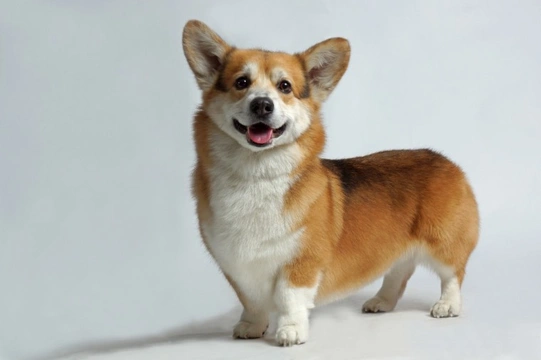
Osteochondrodysplasia (dwarfism) in dogs
Osteochondrodysplasia (often shortened to “OCD”) is a type of skeletal dwarfism that can affect dogs, and whilst some types of dwarfism aren’t harmful in and of themselves and are actually breed standard traits for dogs like the Corgi and the Dachshund, this is not the case with osteochondrodysplasia.
Osteochondrodysplasia is a hereditary and harmful form of dwarfism that can have a serious and acute impact on the quality of life and longevity of affected dogs, and in some cases, necessitates the euthanasia of affected dogs while they are still very young, to prevent further suffering.
In this article we will provide an introductory guide to osteochondrodysplasia in dogs, covering why the condition develops, how it affects dogs, and how it can be prevented from being passed on through breed lines to subsequent generations of pups. Read on to learn more about canine osteochondrodysplasia.
What is osteochondrodysplasia?
Osteochondrodysplasia is a type of dwarfism that is a developmental abnormality that affects the bones and cartilages, resulting in deformities of the bones and joints, as the bones do not grow and form normally.
The term osteochondrodysplasia is something of a catch-all term used to refer to a variety of different presentations of dwarfism that are or can be harmful to the dog itself, and which is commonly caused by a hereditary gene mutation, or collection of mutations.
Generally, the condition will most obviously affect the normal development of all of the dog’s long leg bones, although it may affect two or even three legs but not all of them. This results in an abnormal gait that can be variable in severity, ranging from mobile but unusual in some dogs to virtually unable to walk at all in others.
The condition is also painful, often severely so, and causes significant stiffness of the joints too, particularly in puppies. In some cases the stiffness will become less pronounced in adult dogs, but often, affected pups are euthanised prior to reaching their first birthday because their quality of life may be untenable.
Additionally, in adult dogs with osteochondrodysplasia, further problems are apt to develop as the dog gets older, which may include osteoarthritis, spine and back problems, and the secondary complications that can develop over a lifetime of living with a skeletal deformity and the effects that this has on the rest of the body.
In some presentations, the dog’s head and other areas of the body will appear abnormally large or otherwise unusual, depending on the full extent of the condition.
How do dogs develop osteochondrodysplasia?
In the vast majority of cases of osteochondrodysplasia in dogs, the condition is hereditary and is passed on from affected or carrier parent dogs to their young. Whilst it is unlikely for an affected dog to be bred from because the presentation of the condition is usually self-evident, carrier dogs can also pass on the genes for the condition too, and if parent dogs pass on some form of the gene mutation responsible for osteochondrodysplasia to their pups, there is a high chance that the pups will inherit the condition in their turn.
However, osteochondrodysplasia can, in more rare situations, be caused as a secondary side effect of other health conditions, such as thyroid or hormonal imbalances, heart defects, and even malnutrition when young.
What are the symptoms of osteochondrodysplasia in dogs?
It usually becomes evident early on in the dog’s life if they are suffering from osteochondrodysplasia, because affected pups generally display symptoms from more or less as soon as they start to try to walk.
Affected dogs may display quite a wide range of different physical abnormalities and other symptoms, which may include:
- Abnormal bone formation, particularly in the legs.
- Larger than normal joints.
- Bowing of the front legs.
- A crooked or malformed spine.
- An overly large head.
- An undershot jaw, which might result in crowded teeth or unusual dentition.
- An unusual, often shortened walking gait, or potentially inability to move around normally.
- Significant joint stiffness, particularly in puppies.
- Osteochondrodysplasia is usually painful, and so affected dogs are apt to be uncomfortable and in pain a lot of the time.
Your vet will need to make a formal diagnosis of your dog’s condition to confirm or rule out osteochondrodysplasia, and to provide you with advice on how significant its impact is and how the condition is likely to progress as the dog ages.
Osteochondrodysplasia in dogs cannot be reversed or cured, but by knowing what you are dealing with, you can work with your vet to keep your dog comfortable and improve their quality of life where possible. Sadly, in some cases, the pain and restricted movement that the condition causes may result in euthanasia of the affected dog being the kindest eventual option.
Can osteochondrodysplasia in dogs be prevented?
Because osteochondrodysplasia is hereditary, it can be prevented effectively by ensuring that dogs that are affected by or carriers of the condition are not used for breeding.
In order to determine this, a DNA test can be undertaken to return a result on the dog’s status. In some dog breeds that see more than their fair share of dogs with the condition, breeders are advised to test their parent stock prior to breeding.
One of these breeds is the miniature poodle, within which almost 10% of dogs of the breed carry at least one copy of the gene mutation for osteochondrodysplasia.
Additionally, as the miniature poodle is one of the dog breeds most commonly used in deliberate hybrid crossings to produce dog types like the cockapoo, breeders of hybrid dogs with a miniature poodle ancestor might wish to consider having their own parent stock tested too.



